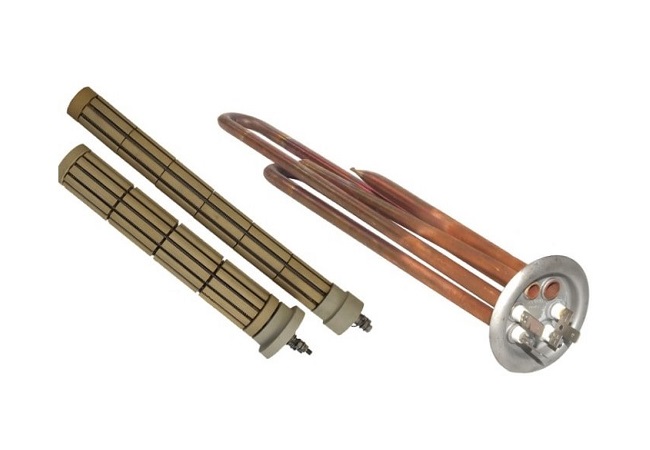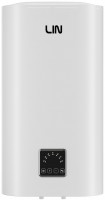Thermex IF-50 V
 | Outdated Product Type: storage; Energy source: mains; Tank volume (L): 50; Power source: 230 V; Power consumption (W): 2000; Magnesium anode; Heating elements: 1; wet heater; thermostat; overheat protection; safety valve; Pipe connection: bottom; Dimensions (cm): 88.7x43.6x23.5; |
Thermex IF-50 V | ||||||||||||||||||||||||||||||||||||||||||||||||||||||||||
|
| |||||||||||||||||||||||||||||||||||||||||||||||||||||||||
The information in the model description is for reference purposes.
Always clarify the specifications and configuration of the product with the online store manager before purchasing.
Catalog Thermex 2025 - new arrivals, bestsellers, and the most relevant models Thermex.
Always clarify the specifications and configuration of the product with the online store manager before purchasing.
Catalog Thermex 2025 - new arrivals, bestsellers, and the most relevant models Thermex.

Which is better: wet or dry heating element in a water heater?Learning the design features, pros and cons of "wet" and "dry" heating elements in water heaters

Detailed FAQ on storage water heatersWe answer the most common questions regarding the installation and operation of storage water heaters
Model overview based on user reviews
The Thermex IF boiler series, including models like the IF-50 V and IF-80 V, receives mixed reviews from users. Many appreciate its compact design and quick heating capabilities, making it suitable for small spaces. However, there are significant concerns about its reliability and durability. Common issues include frequent leaks, poor insulation, and the need for regular maintenance, such as replacing heating elements and anodes. Some users report problems with the electronics and temperature control, leading to overheating or underheating. Warranty service is often criticized for being unhelpful, with some users experiencing difficulties in getting replacements or repairs. Despite its attractive appearance, many users advise caution due to the potential for high maintenance costs and the risk of component failure.
Pros
Cons
21 8 10 5 |
To avoid unnecessary hemorrhoids, I initially got rid of 700 W of heating element (absolutely not needed). Every six months I drain the water, remove, disassemble and wash the tank with descaling the heating element. Pollution depends entirely on the quality of the water. If necessary, change the anode. Hissing is a clear sign that it is time to flush the tank and clean the heating element (I don’t allow this before, strictly - once every six months). For 10 years of operation, I changed all the resistances on the power board at once (something went wrong there, I don’t remember already). How many heaters have you changed? Didn't count. But with my rule to arrange a mandatory cleaning every six months, the heating element can easily withstand more than a year (if the heating element is of high quality). I will say right away that the boiler does not work for me all the time, but I turn it on up to 40 gr. somewhere in a day (more I do not need). Keeps warm for my purposes. I’m thinking about buying a spare power board in advance, because you won’t find it quickly, but there’s no way without hot water. I noticed that over time I began to heat the water more than the set temperature. This is of course a serious disadvantage. Why is that? Haven't figured it out yet. The boiler has been in operation for over 10 years. Inconvenient disassembly. Fulfilling the full schedule of work, starting with draining water, removing, disassembling (etc.) and before returning it to its place, I spend half a day - a lot. But once every six months, you can devote time to this. |
compact convenient currently, it "consumes" too much electricity in standby mode. The quality of the insulation is questionable, as the room where it is installed has become warmer. |
Do not buy No merits A year since I bought this IF 50V 1002280367 (EVN). It impressed with its [censored] quality and equally warranty service: 1 - Design: A) To access the electrical block, you need to: drain the water, disconnect the EVN from the plumbing, remove the cover. CONCLUSION: A plumber and an electrician are needed. B) The heating elements are different in power and design. CONCLUSION: The EVN user will have to scramble in search of the right heating element. C) The heating element is attached with SIX!!! nuts. CONCLUSION: The EVN is designed as a constructor for children. D) Any sensible person understands that if in an EVN designed to heat water to 75°C the thermostat triggers at 85°C, then the temperature control system or thermostat is faulty. Nevertheless, the manufacturer recommends: REMOVE THE COVER (DISASSEMBLE THE ENTIRE PLUMBING), PRESS THE BUTTON UNTIL IT CLICKS!!! CONCLUSION: The manual is written for the completely unsound! 2 - Chronology: after three months replaced the main heating element. Burned out, cracked. The service center specialist tells a tale that someone is illegally using your electricity and you should complain to Gorenergo and so on and so forth. But the heating element is still replaced. After TWO WEEKS! The NEW heating element leaked. Replaced without referencing Gorenergo. After seven months the thermostat failed, replaced it. Again a reference to Gorenergo. A week before the warranty expires the main heating element burned out again. Again a reference to Gorenergo and readiness to replace the heating element for cash. Note: washing machine - 5 years, tankless water heater - 4 years, etc. |
3 out of 46 user review(s) shown
10 more user review(s)
Video reviews
Additional features water heater Thermex IF-50 V:
- Thermometer
- Fast heating
- Bottom eyeliner
| THERMEX | IF 30V | IF 50V | IF 80V | IF 100V |
| Power, W | 2000 | 2000 | 2000 | 2000 |
| Tank volume, L | thirty | fifty | 80 | 100 |
| Heating time, min | fifty | 80 | 130 | 160 |
| Device dimensions (HxWxD), mm | 612x436x235 | 887x436x235 | 1025x493x270 | 1245x493x270 |





